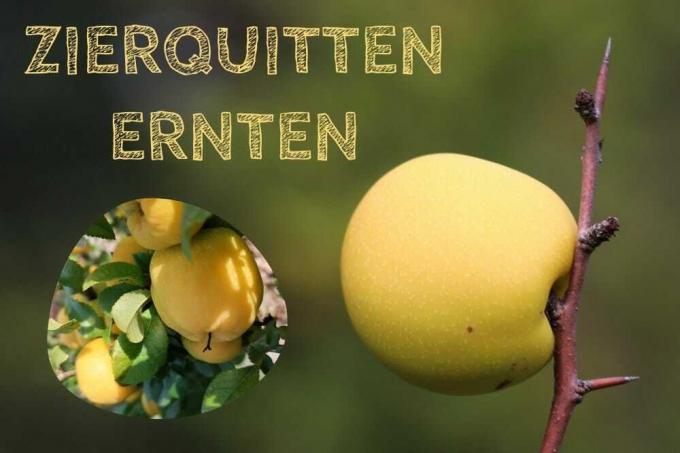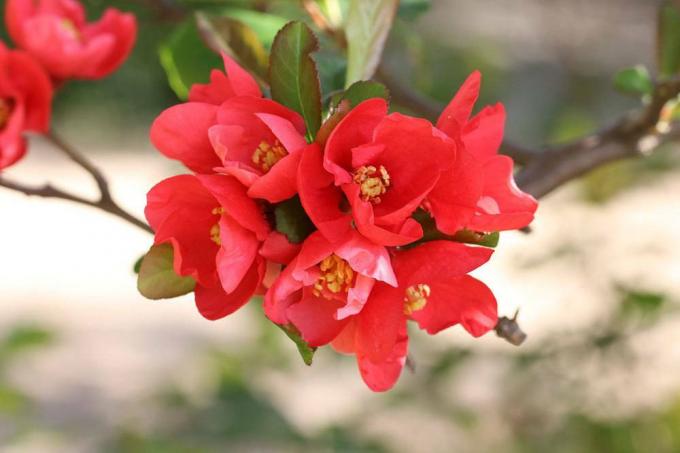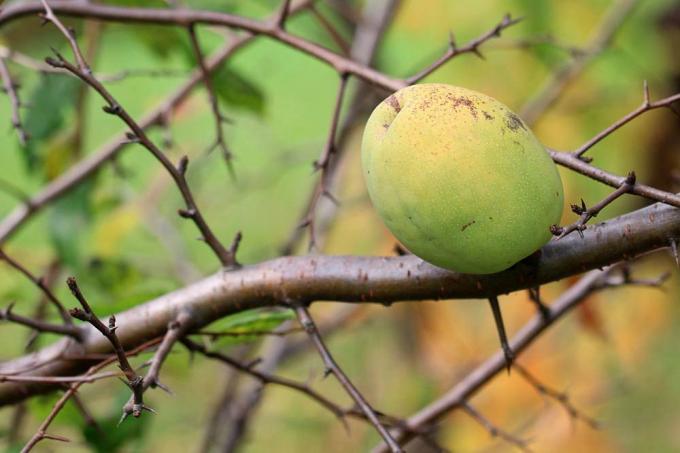
table of contents
- Harvest time
- Recognize harvest maturity
- harvest
- storage
Ornamental quinces (Chaenomeles) are usually only grown because of their attractive flowers. Many gardeners do not even know that the fruits are edible. The right harvest time for the quince is important for the aromatic taste.
Harvest time
The Chinese and Japanese ornamental quince, also called "Nordic lemon", develops after the fertilization of the flowers about five centimeters to tennis ball-sized false fruits. It is one of the last types of fruit to be harvested during the year. The harvest time for the quince begins in September at the earliest, depending on the weather. However, it is worthwhile to wait a little longer before harvesting so that it can develop its full flavor. So that the ornamental quinces are not damaged, you should harvest them before the first severe night frost.

- Late September to October
- Usually not fully ripe until the end of October
- depending on the weather and development until November
Recognize harvest maturity
You can tell when the ornamental quince is ripe by the color change of the false fruits. As the degree of ripeness progresses, the apple-shaped fruits turn increasingly yellow. But only when the skin of the quince turns a strong golden yellow and the fruits lose their brownish fluff, the full fruit ripeness is reached.
- uniform, golden yellow color
- some varieties also yellow-orange with reddish cheeks
- no or hardly any fluff
- pronounced, aromatic fragrance
Let the wild fruit hang on the bush as long as possible. Don't worry if the first cold nights come in autumn. Ornamental quinces only develop their best aroma when they have suffered light frosts. In that case, however, you should harvest the fruits promptly and process them as quickly as possible. If you want to store ornamental quinces for a long time, you should harvest them from the bush before the first severe autumn frost so that they do not get brown spots later and start to rot.

harvest
Basically, you don't need any tools for harvesting. Since the shrubs rarely reach a height of more than a meter, they are easy to reach. Ornamental quinces only form a very short, woody stem. This is difficult to cut with a knife or secateurs without damaging the fruit or the wood. However, since ripe fruits are still very hard, you can easily pull them vigorously. The easiest way to turn off the quince is, however, from the shoot.
Note: The shrubs are equipped with strong thorns on the shoots. If you have not planted a thornless species, you can easily injure yourself.
storage
As a rule, ornamental quinces are not consumed raw because they are extremely hard and sour. Usually they are processed into jam, juice or jelly. They can be stored in their raw state for a few weeks in large wooden or fruit boxes, provided you harvest them before the first severe frost. If some fruits are not yet fully ripe, they will still ripen in storage. To do this, however, sort out any specimens that have an injured shell or brown spots. Pressure points also quickly rot. Chipped fruit must therefore be processed immediately. If possible, do not store quince near other types of fruit, as their strong aroma can easily be transferred to them.

- dry
- cool (2 to 3 degrees)
- Frost free
- in a cool cellar for around two months
Attention: The kernels of ornamental quince contain poisonous components and should therefore be removed before eating them raw. Longer heating renders these substances harmless.


